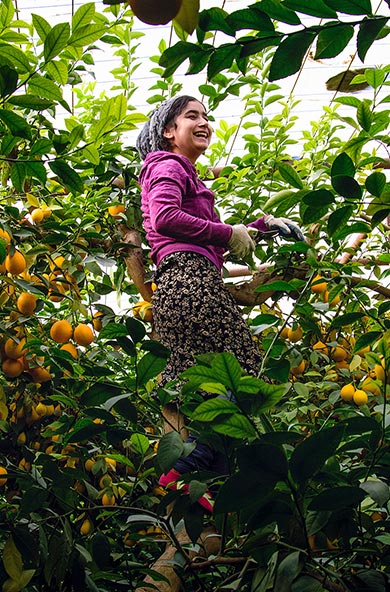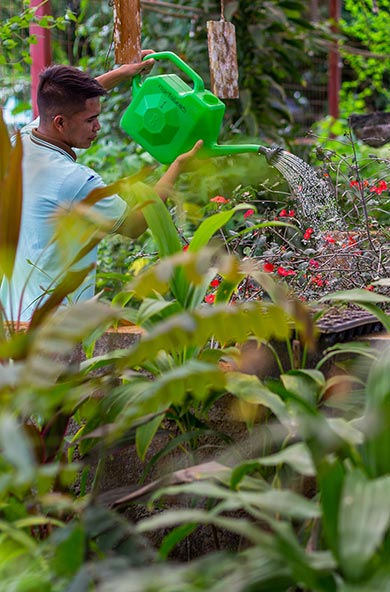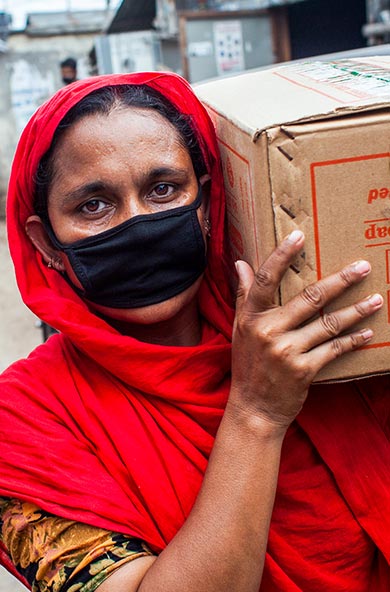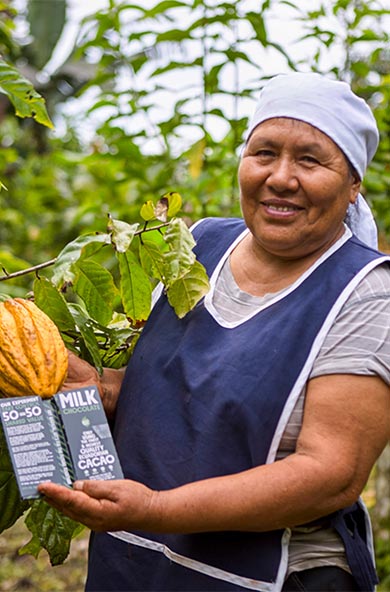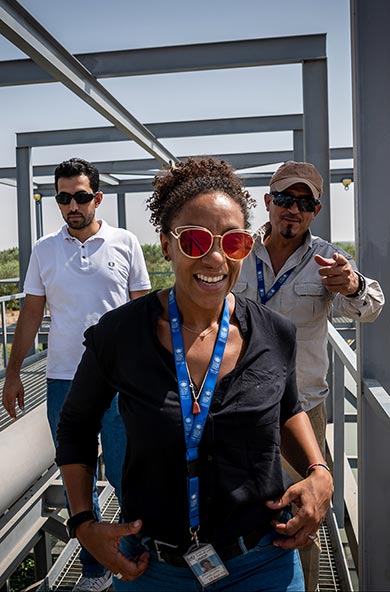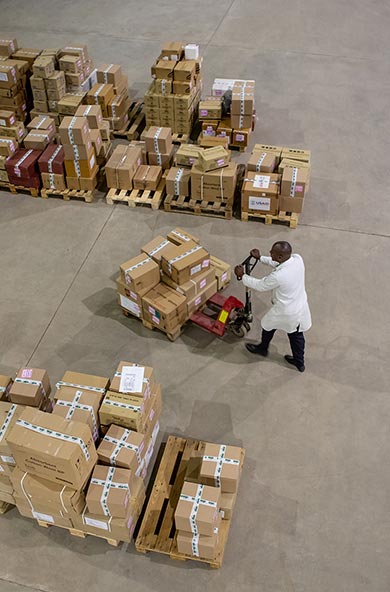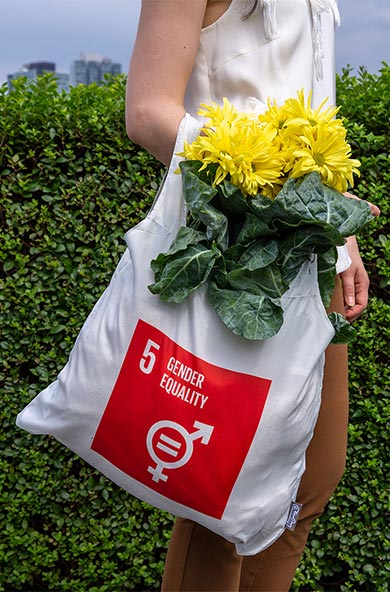Remarks at Roundtable on Localizing the Implementation of the SDGs - “Innovative Partnerships for SDG Financing”
Innovative Partnerships for SDG Financing
October 12, 2018
As prepared for delivery.
Excellencies, Distinguished panelists and participants, Ladies and Gentlemen;
With the adoption of the 2030 Agenda and the Sustainable Development Goals, the world’s nations agreed to an ambitious set of commitments and pathways which – if successfully implemented - will lead to fundamental transformations of our economies and societies.
Addressing the SDG investment gap
Estimates on achieving the SDGs vary broadly, but some indicate that will take between US$5 to $7 trillion, with an investment gap in developing countries of about $2.5 trillion. In contrast, global flows of development aid (ODA) reached USD 146.6 billion in 2017.
While traditional types of development financing – including ODA and domestic public resources – will remain critical to achieving the SDGs, particularly for the poorest and most vulnerable countries, private and blended capital will also be central.
The good news is there is no shortage of private capital across the world. There is currently about US$256 trillion in private wealth in the global capital markets. Attracting just 1% of this amount would meet the financing gap for the SDGs in developing countries.
Blended finance instruments, where official resources are ‘blended’ with commercial private capital, also show promise. Between 2012-2015, official development finance interventions mobilized USD 81.1 billion from the private sector. At this rate, blended finance is expected to increase to $252 billion by 2030, but this would still fall short of filling the SDG funding gap.
Private sector investment continues to be highly concentrated, mostly in resource-rich countries and extractive industries. At the same time, investments in many developing countries have been curtailed by: 1) the high perception of risk; 2) a lack of investment-ready opportunities; and 3) unpredictable and limiting regulatory frameworks to de-risk and incentivize sustainable investments.
In the words of our UN Secretary-General, “the world has the resources to deliver, but they are not allocated where they are needed most” .
The SDGs have put a spotlight on a market failure or lack of alignment between, on the one hand, those policy objectives we set for ourselves in developmental terms and, on the other hand, the issues the financial system and financial markets are focused on. Our challenge is to recognize that we have to bring two global conversations together.
One conversation is about the international, economic and financial policies and the national space for policy-making that is focused on economic development and growth. And the second is a conversation about securing private and public finance for SDG achievement, including ODA, but also many domestic financial resources that are currently not being deployed in that context.
It is now an imperative to work towards a global strategy that can look at an alignment between the incentives that a financial system has to invest in the SDGs and long-term economic development prospects, including a fair globalization agenda.
Last month, the UNSG launched his strategy for Financing the 2030 Agenda for Sustainable Development, laying out actions the UN will take support countries to accelerate financing the SDGs, including: (1) we must align global economic policies and financial systems with the 2030 Agenda; (2) we need to create and/or strengthen sustainable financing and investment strategies at the regional and country levels; and (3) finally, we must seize the potential of financial innovations, new technologies and digitalization to provide inclusive and more equitable access to finance.
The SDGs as an investment opportunity
The SDGs are not only highly relevant for promoting broad-based trust and prosperity but offer an excellent economic investment opportunity for financial markets and economic growth.
Drawing on consultations with governments and companies, UNDP and the Global Reporting Initiative published a report on how business accelerate the achievement of the SDGs . Two complementary trends are clear: (1) businesses are increasingly engaged in impact measurement and sustainability reporting to capture their sustainability impact and (2) there is growing public sector interest in capturing the business contribution to the SDGs.
Indeed, according to the Business and Sustainable Development Commission, up to $12 trillion in new economic opportunities could be generated through investments in agriculture, cities, energy and health alone – all critical areas for SDG achievement. This could lead to the creation of 380 million jobs by 2030.
It is here that the critical importance of partnerships, and the role of multilateral institutions – like UNDP – in forging such partnerships, come into play.
The importance of innovative partnerships
We are witnessing a growing change in business models, where innovation and broad-based partnerships often play a key role.
Sustainable and responsible investing, blended finance instruments, green bonds, and corporate venturing – represent a range of investment approaches which are more readily aligned to the SDGs because they already incorporate social and environmental considerations.
Governments can create partnerships with institutions working on climate change, such as the Climate Bonds Initiative, to develop financial products such as green bonds and securities and to develop new market platforms such as crowdfunding and fintech.
The fintech revolution, for instance, is disrupting practices in banking, investment and insurance and offering new ways to democratize and make affordable the participation into the financial system, including to the poor and excluded in remote and rural areas. Frontier technologies open possibilities for financial innovation to mobilize capital towards the SDGs, including risk-assessment and investment returns, such as in the case of Artificial intelligence, blockchain, the internet of things, and cloud computing .
Last year, HSBC launched the first SDG Bond for $1billion, which matures in 2023 and was three times oversubscribed. It will be used to support projects that offer broad social, economic and environmental benefits as aligned to seven selected SDG targets.
Indonesia and Malaysia have been leading with the ‘green sukuk’ – an innovative financing mechanism aimed to protect the environment and tackle climate change. Earlier this year, Indonesia traded $1.25billion in five-year green sukuk that will invest in renewable energy and green infrastructure. Globally, $155.5 billion of green bonds were sold in 2017.
Moving from Billions to Trillions
Impact investment is gradually growing from niche-to-scale in a few years’ time globally: 26% or almost US$23 trillion of investments worldwide were managed under Environmental, Social and Governance (ESG) standards in 2015; and green bonds emissions grew from zero to close to a trillion in a decade.
So, it is truly viable to move from billions to the trillions required to fill the SDG investment gap. Right now, our biggest challenge for scaling up private investments on the SDGs continues to be the lack of harmonization and standardisation.
To move from billions to trillions, greater cooperation is therefore needed to build and sustain the progress attained by putting in place regulations and incentives, to ensure that financing flows towards investments that advance the SDGs prove the “additionality” offered by responsible investment and innovative finance models.
UNDP, in partnership with governments, philanthropy, businesses, investors, communities, civil society and academia, seeks to amplify and accelerate this momentum for market change into transformation.
Few weeks ago, during the UN General Assembly, UNDP launched the SDG Impact Facility which aims to support business to adapt and transform their core strategies to deliver financial, social and environmental performance, and to use the SDGs as the basis for engaging in untapped markets.
Conclusion
To meet the challenge of addressing the SDG investment gap, our efforts must be accelerated ahead of the 2030 deadline. In so doing, partnerships are of the essence – and not only traditional ones, but also the ones that draw on non-traditional forms of cooperation and co-creation for transformative impact.
We in the UN development System, the IFIs, and other multilateral institutions must use our convening capacities to prepare the ground for the confluence of these conversations between the interests of international financial markets and the need to finance the SDGs.
Our success will represent our collective legacy to the generations of the future.

 Locations
Locations